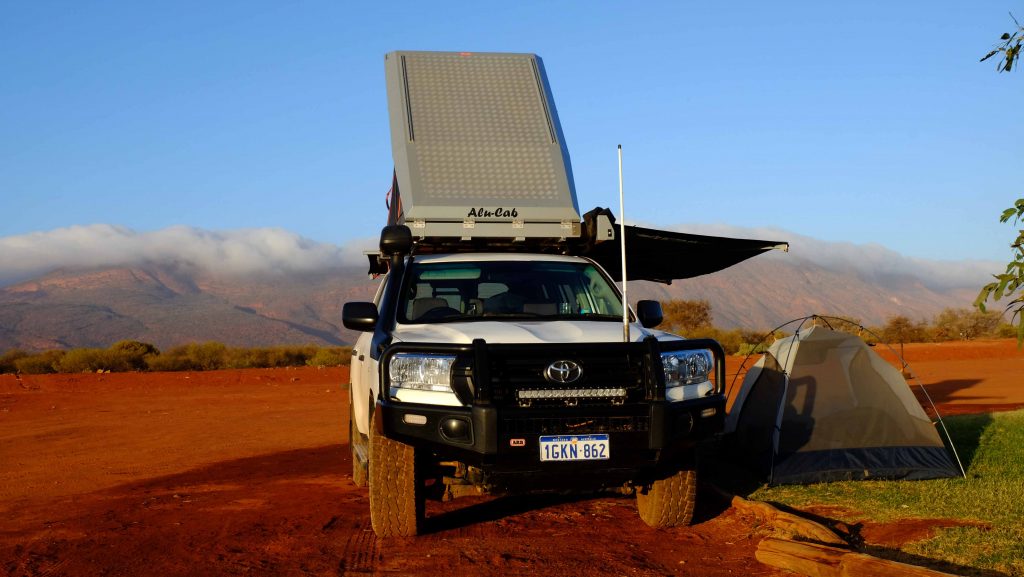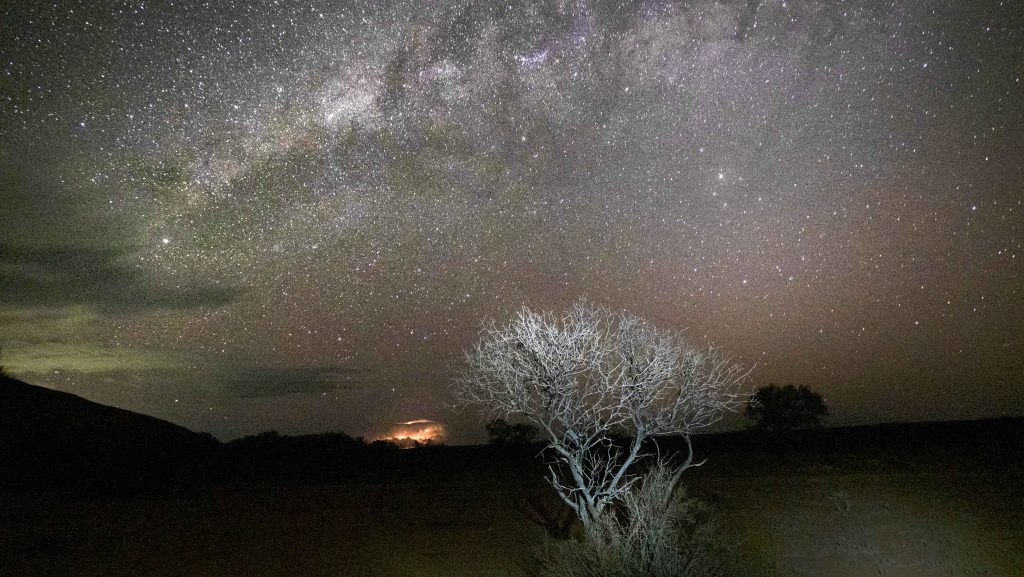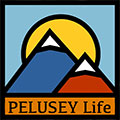ROCK, River and Reef (Part 1)
ROCK
Sitting near a vivid red rock with ancient Aboriginal paintings, watching the sunset and preparing for the best milky way show in the world has a feeling of connection to the earth and how small we are. We had wanted to go “up north” but it was getting too hot in the Kimberley and the Pilbara. We are in search of red dirt, rocks, outback rivers, coral reefs and stars: outback stars.

Spectacular Outback Sunsets
We decided on the biggest rock in the world, the biggest fringing reef in the world and the best star gazing in the world. Our Western Australian outback road trip had the advantages of being a shorter drive and not as hot as further north in October and November.

Cloud rests on the top of Mount Augustus
We loaded up our rig from Red Dirt 4WD Rentals and started our road trip driving from Perth to Cue. Cue was known as the Queen of the Murchison in its gold mining days. The area is home to the proposed UNESCO Geopark because of its unique rocks. Walga Rock is the second biggest monolith in the world after Uluru. The rock features Indigenous art and an interpretation of a sailing ship of mysterious origins.

Indigenous rock art at Walga Rock
We chose Walga Rock as the location for our stargazing adventure. We knew it was a new moon (no light from the moon) so the stars and milky way would be amazing. The Murchison is one of the best star viewing places in the world and is the future location of Murchison Widefield Array, an expanse of low frequency telescopes that will increase our knowledge of the universe.

Five Billion Star dinner at Walga Rock
The best way to view stars is with no light pollution so we had to move away from Cue. We set up our table and chairs next to the rock, complete with white tablecloth and silverware. Then we cooked up a storm on our Weber Baby Q. Everything tastes good in the bush. After a spectacular outback sunset, the stars began to appear until the full extent of the milky way created an archway of millions of sparkling lights. And to cap it off we had some distant lightning. Mother Nature at its finest.

Milky Way and lightning
Our rock of choice for this journey was Mount Augustus, the biggest rock in the world. It is two times the size of Uluru. Burringurrah, as it’s known to the local Wajarri people, is very significant culturally. The rocks dreaming story comes from a local boy who was punished for breaking the law during his initiation into manhood.
Waking up in our Alucab rooftop tent to the vision of cloud resting on top of Mount Augustus was a privilege on our first morning there. The immensity of the rock seems to create its own weather or at least cloud forming on top. During the day the rock bakes under the searing hot sun. Our campsite is at the Mount Augustus Tourist Park, a large area of powered sites and cabins complete with friendly wandering calves and the dramatic rock backdrop.

Waking up at Mount Augustus
Walk trails vary from short strolls to see Aboriginal paintings to the full hike to the summit. We chose the Edney’s Lookout because it’s shorter than the Summit Trail in the October heat. Five minutes into the 6km return hike we came across Aboriginal etchings carved into the red rock.
The short Flintstone Rock Walk features a large slab of rock that is a special experience. The large flat rock rests over a dry creek. We got down low and crept into the space. Underneath the rock, it is smooth and cool. Lying on our backs in the shade, we gaze upwards at a ceiling of fascinating Aboriginal art. A true place to connect to earth.

Indigenous rock etchings at Flintstone Rock
Next on the outback odyssey is the Kennedy Ranges, a spectacular escarpment etched with eroded gorges. At sunrise the rock faces of the escarpment light up and glow red. There is something about the red rocks that make us feel connected to the land.

Kennedy Ranges
Looking at the red rugged cliffs, it is hard to comprehend how Honeycomb Gorge came to be created. The mauve coloured rock with honeycomb carved walls forms an amphitheatre, the result of the erosive power of water. It is a beautiful place to sit and contemplate, especially in the cooling afternoon shade.

Honeycomb Gorge
Kennedy Range National Park was a station until 1993 before it was gazetted as a National Park with a basic but beautifully scenic campground. It is 184km east of Carnarvon.
Time to hit the coast and experience some REEF

